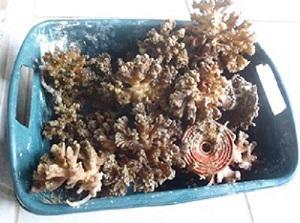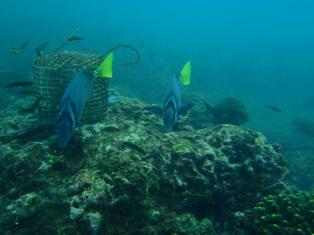Erika Piedad Cárdenas Murillo
The aim is to understand the impact of grazers on algal communities and how they affect the growth rates of Poscillopora spp. on the central coast of Ecuador.

Grazers can drastically change the species composition of marine communities by altering the dominance patterns of primary producers, many of which are species that create biogenic habitats. Within the diverse group of grazers, fish are particularly important for coral reef communities. These consumers can have complementary effects that control algal cover and biomass, thus facilitating the growth of corals. Machalilla National Park still holds one of the best remnants of coral patches in Ecuador. I propose to conduct a series of manipulative experiments to understand the role that fish play on the growth rate of corals of the genus Poscillopora.

To study the impact of herbivorous fish I will design 3 treatments that will control the access of consumers to coral fragments. I will build cages of 25 x 25 cm. This method consists of collecting fragments of P. damicornis y P. capitata (8 cm long). These fragments will be fixed inside the cages using cable ties. The replicates will be distributed in block for a total of 7 blocks (seven replicates for each treatment). Treatments will be assigned randomly to each block.
In order to quantify the impact of fish on marine algae I will set up two underwater cameras randomly assigned to experimental units for periods up to two hours. With this information I will be able to identify and quantify the individual impact of each species of fish on corals and marine algae and I will be able to extrapolate the impacts of individual consumers to estimate the population level effect.
I will monitor algal percent cover at each treatment using 25 x 25 cm quadrants. At the same time, I will quantify the associated flora and fauna and will classify these to the highest possible taxonomic level. Furthermore, the health of the experimental corals will be assessed according to their external appearance and classified as healthy, bleached or dead. To assess the size of corals at the onset of the experiment, I will determine the weight of each fragment and the volume that each fragment occupies using a container of water of a known volume.
With this study, I hope to contribute to our understanding of the role that fish play on the dynamics of coral reef communities, and whether their impacts facilitate coral growth rates and the diversity of the flora and fauna associated to with local coral communities.